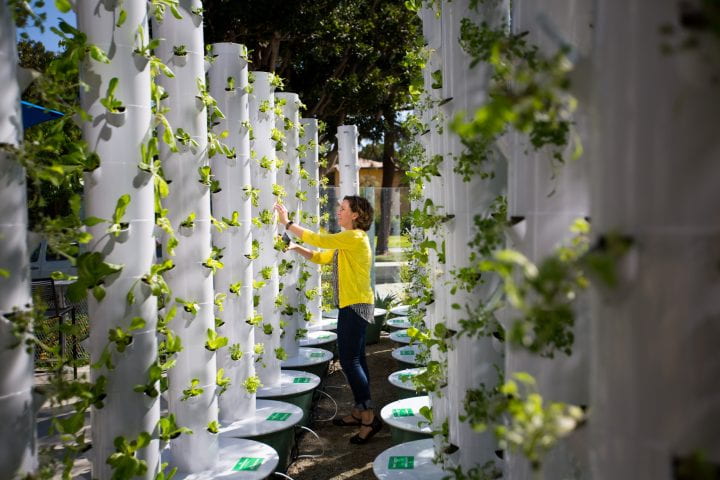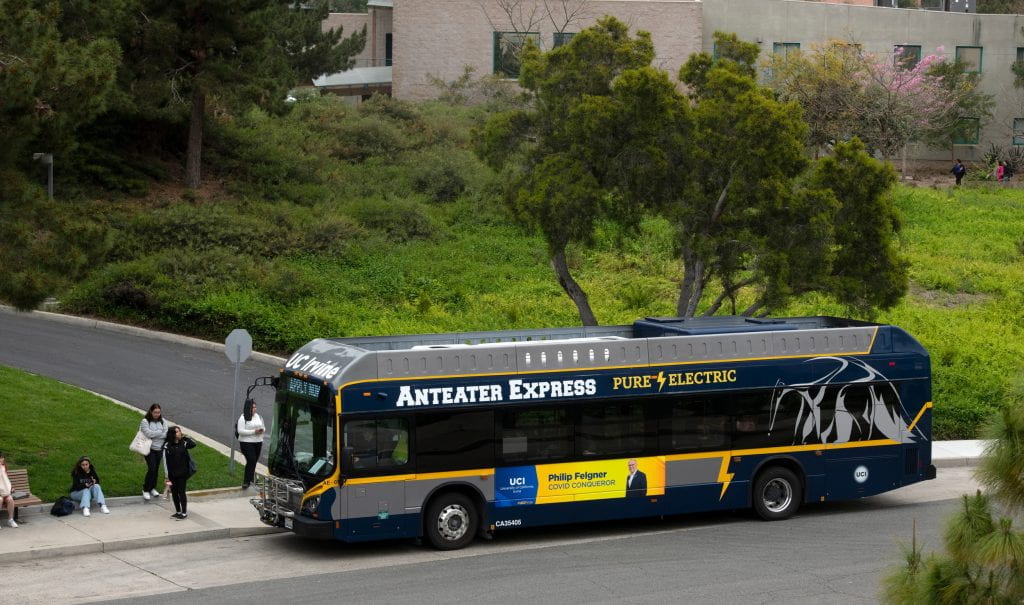America’s greenest university
How UCI continues to lead the way in sustainability practices

Inside their lab at UCI, chemistry professor F. Sherwood “Sherry” Rowland and postdoctoral student Mario Molina embarked on a scientific journey that would rewrite our planet’s fate.
First published in 1973, the duo’s revelation pierced through the mundane haze of aerosol sprays, uncovering a single chlorine atom’s potential to erode the Earth’s stratospheric ozone layer. Their findings catalyzed the Montreal Protocol, one of the most successful worldwide environmental agreements to date, and earned them the Nobel Prize in chemistry.
The men’s work also spawned UCI’s culture of pioneering sustainability research and eco-friendly practices. Among other achievements, UCI became the only school to secure a spot among Sierra magazine’s top 10 greenest universities for 12 consecutive years.
“The culture of an academic institution is established by faculty leadership,” said Wendell Brase, associate chancellor for sustainability at UCI. “I think that’s where the legacy started, with Sherry Rowland and Mario Molina, and that’s powerful.”
The university’s commitment to environmental stewardship can be seen throughout the campus today.
Green buildings
All University of California campuses aim to switch to 100 percent carbon-free or renewable electricity by 2025. UCI is on track to becoming the first to achieve that goal.
It has built 23 LEED Platinum-certified buildings, the most of new university construction in America. The certification signifies that a structure has gone above and beyond in incorporating eco-friendly features into its design and operations.
For example, all buildings have occupancy sensors to turn heating, ventilation, air conditioning and lighting on and off. This “smart building” technology reduces energy use by 50 percent to 80 percent.
UCI has doubled its campus size over the past 25 years, but the energy use remains the same.
All-electric bus fleet

In 2018, UCI became the first college in the nation to abandon its traditional biodiesel buses and transition to a fully electric bus fleet that moves students throughout campus.
Operated and financed by students, the Anteater Express shuttle service employs 23 electric buses to convey over 2 million passengers annually. They serve as the primary mode of transportation for students living in nearby housing communities.
Anteater Express also runs a zero-emission hydrogen fuel cell bus. It fills up at an on-campus station, the first of its kind in California and the world’s most used public hydrogen vehicle refueling station.
For students and faculty who drive electric cars, there are nearly 200 charging stations on campus.
Recycled water
UCI made waves in water conservation in 2018 when it switched to recycled water to cool its buildings.
In collaboration with the Irvine Ranch Water District, the university installed a pipeline to bring water from the nearby Michelson Water Reclamation Plant to the on-campus cooling plant. The water is chilled to 39 degrees and pumped through the buildings to cool them down, saving electricity that would’ve been used for regular air conditioning.
The switch to recycled water also saves about 80 million gallons – enough to fill 120 Olympic-size swimming pools – of drinking water each year.
The UCI-IRWD partnership dates back to the ’60s, when the university started using recycled water for landscaping.
Sustainable dining
Feeding over 36,000 students isn’t an easy task. Still, UCI Dining Services is taking steps to make eating on campus more sustainable.
The dining halls are adding options with healthy plants at the center of the plate and a small quantity of animal protein as well as “Cool Food Meals” with low carbon and water footprints. Much of the produce comes from more than 15 farms around Southern California.
UCI also built an aeroponic garden on the patio of The Anteatery. Here, staff members are growing leafy greens and herbs served at the food hall. This method uses much less water – 90 percent less than traditional farming – and the plants grow two to three times faster, producing up to 10 times more food in the same space.